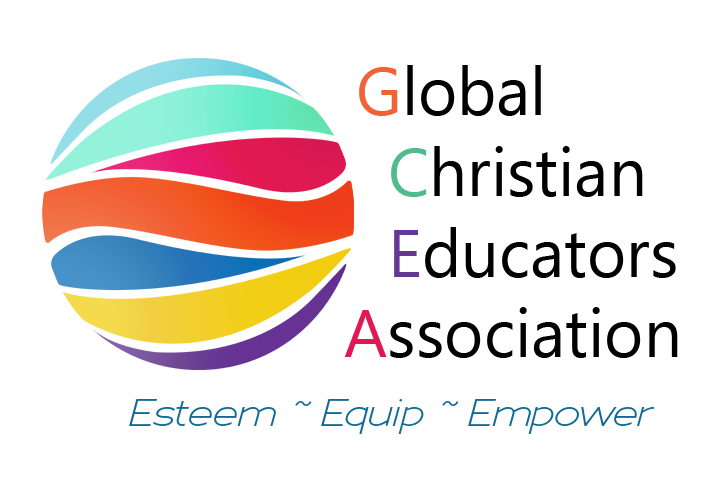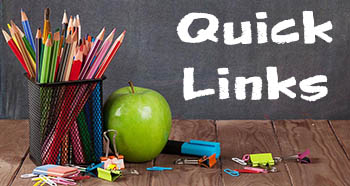Global Youth Conference Needle & Thread Guidelines
Click here to download a pdf version of the Needle & Thread Guidelines.
All categories are for FEMALE contestants only. Contestants must make girls’/ladies’ garments (except in crochet and knitting). No children’s garments are permitted, as well as other projects, except in crochet and knitting. No full-size afghans are permitted in these two categories. Contestants are allowed to submit one entry per category and must not receive help on their projects other than instructions.
All fashions must meet GYC dress requirements. Needlework entries. Thin or “see-through” fabrics must be fully lined WITH OPAQUE MATERIAL; LACE MATERIAL IS SEE-THROUGH.
No Needle/Thread entry should attempt to portray the face or image of Christ.
Please note: Latch-hook is not allowed. Projects must be completely finished to be eligible. The contestant is encouraged to be creative and vary from the pattern. If this is done, the differences should be explained on the Needle/Thread Report (CF49). Points are given for originality.
Checklist for Needle and Thread:
- Pattern (only those pieces used).
- Needle/Thread Report (CF49).
3. A tag identifier MUST be attached to each piece of the entry with the following information: print or type the student’s name, school name, customer number, school address, city, state/province, ZIP/Postal Code, and category entered.
4. Plastic bag to hold pattern, Needle/Thread Report, and Model Picture. Attach bag to hanger of garments. Attach with safety pin to Needlework entry, or secure to back of frame as applicable.
5. A COLOR PHOTOGRAPH OF GARMENT BEING MODELED. (This does not apply to Needlecraft items such as sweaters.)
Note to Sponsor: Be sure the contestant enters her project in the correct category. Review the Judge’s Forms to see where points are given and make sure that the entry includes each point. Seam finishes are judged according to the work involved as well as neatness. |
GARMENTS
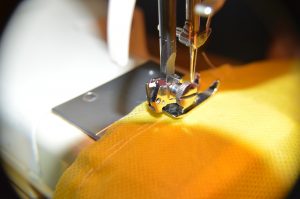 Coordinates—Two pieces only. Select one of the combinations: skirt and blouse; jumper and blouse; two-piece dress; or culottes and blouse. Use appropriate fabric for coordinates.
Coordinates—Two pieces only. Select one of the combinations: skirt and blouse; jumper and blouse; two-piece dress; or culottes and blouse. Use appropriate fabric for coordinates. - Dresses—church dresses, casual dresses, tailored dresses one piece only.
- Formals—full-length dress or fancy blouse and skirt combination.
- Coats/Suits—raincoats and overcoats must be three-fourths (3/4) or dress length and fully lined. The three-fourths length coat is to be just below the fingertips when the arms are held straight down at the sides. Suits (2-piece minimum) should fully lined. A portion of the lining on all garments in this category must be left open for judging.
NO SERGED SEAMS on garments. There is no way to judge a serged seam against a hand/machine finished seam. NOTE: Serging may be used to finish a seam, as you would use a zig-zag stitch. See Hints from the Needle/Thread Judges.
COORDINATES/DRESSES/FORMALS JUDGING CRITERIA
Areas of Evaluation POSSIBLE POINTS
Meets GYC Guidelines appearance—Length, cut, modesty (1-10)
Pattern and photograph submitted (1-5)
Creativity—Pattern changes, color changes, originality (1-10)
Overall beauty—Coordination of colors and accessories (such as buttons and bows), matching of plaids, etc. (1-10)
Stitching—Machine and hand (1-15)
Seam finish (1-10)
Zipper, buttonholes, or fastenings (1-10)
Sleeve set and detail (1-10)
Collar/neckline detail (1-5)
Hem detail (1-10)
Proper documentation submitted (1-5)
TOTAL POINTS (100)\
COATS/SUITS JUDGING CRITERIA
Areas of Evaluation POSSIBLE POINTS
Pattern and photograph submitted (1-5)
Creativity—Pattern changes, color changes, originality (1-10)
Overall beauty—Coordination of colors and accessories (such as buttons and bows), matching of plaids, etc. (1-10)
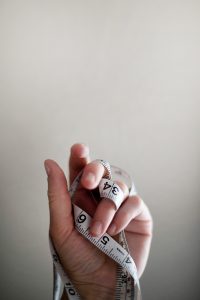 Stitching—Machine and hand (1-10)
Stitching—Machine and hand (1-10)
Seam finish (1-10)
Buttonholes, zippers, or fastenings (1-10)
Sleeve set and detail (1-10)
Collar/neckline detail (1-10)
Hem detail (1-5)
Lining and interfacing (1-10)
Proper documentation submitted (1-5)
Meets GYC Guidelines (1-5)
TOTAL POINTS (100)
NEEDLECRAFT
- Counted Cross-Stitch—No stamped cross-stitch will be accepted. Pictures must be framed without glass. The back of all work must be accessible for judging. Example: tablecloths, place mats, pictures, samplers.
- Embroidery—Decorating fabric with embroidery floss or thread. The back of all work must be accessible for judging. Pictures must be framed without glass. No counted cross-stitch, see “Counted Cross-Stitch” category. “Punch and sew” embroidery will not be accepted. Only regular “needle and thread” embroidery will be judged. Examples: scarves, pillowcases, tablecloths, hand towels, borders for skirts, pillows, pictures, samplers.
- Crochet—Examples: baby afghans (no dimension smaller than 36 inches and no dimension larger than 48 inches), shawls, tablecloths, bedspreads, dresses, sweaters, baby garment sets (sweater, cap, mittens, or booties).
- Knitting—Machine knitting not allowed. Examples: baby afghans (no dimension smaller than 36 inches and no dimension larger than 48 inches), shawls, tablecloths, bedspreads, dresses, sweaters, baby garment sets (sweater, cap, mittens, or booties).
- Afghans –Afghans may be either crocheted or knitted. No baby afghans in this category. Minimum size is 50” x 70“.
- Quilts—May be machine or hand constructed. (Hand constructed quilts will receive higher points.) Minimum size is 50” x 70“. See Hints from the Needle/Thread Judges.
COUNTED CROSS-STITCH AND EMBROIDERY JUDGING CRITERIA
Areas of Evaluation POSSIBLE POINTS
Pattern submitted (1-5)
Creativity—Pattern changes, color changes, originality (2-20)
Overall beauty (1-15)
Technique—Difficulty and variety of stitches (1-15)
Uniformity of stitches (2-20)
Finishing—Thread ends secured, preferably no knots (1-10)
Blocking (1-10)
Proper documentation submitted (1-5)
TOTAL POINTS (100)
CROCHET, KNITTING, AND AFGHANS
JUDGING CRITERIA
Areas of Evaluation POSSIBLE POINTS 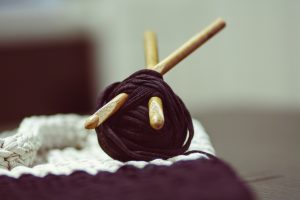
Pattern submitted (1-5)
Creativity—Pattern changes, color changes, originality (1-10)
Overall beauty (1-10)
Technique—Difficulty of stitches, variety of stitches (1-15)
Uniformity of stitches (1-15)
Gauge (1-10)
Finishing—Thread ends secured, preferably no knots (1-10)
Blocking (1-10)
Proper documentation submitted (1-10)
Meets GYC Guidelines (1-10)
TOTAL POINTS (100)
QUILTS JUDGING CRITERIA
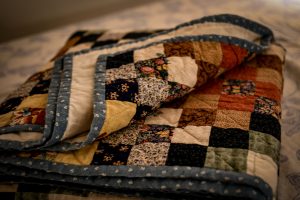 Areas of Evaluation POSSIBLE POINTS
Areas of Evaluation POSSIBLE POINTS
Pattern submitted (1-5)
Creativity—Pattern changes, color changes, originality (1-15)
Overall beauty (1-15)
Quilt top (2-20)
Quilting stitches—Uniformity, size, hand- or machine-stitching goes through all layers of quilt (2-20) Size—Meets GYC Guidelines (1-10)
Finishing for presentation (1-10)
Proper documentation submitted (1-5)
TOTAL POINTS (100)
HINTS FROM THE NEEDLE/THREAD JUDGES The qualities the judges look for are originality and careful attention to details. High points are given for neatness, cleanliness, uniformity, and precision (finishing for presentation). GARMENTS: Be creative. Fit your pattern to meet your body shape and size, and the color should be appropriate for your personal color palette. It is very important to be modest. Pay close attention to where seams, buttons, decorations, necklines, and hemlines are positioned. Use the right size and type needle for your chosen material. Remove all gathering and stay-stitching. Grade all seams and top stitch facings. Blind hemstitch all hems, hiding as much of the stitching as possible. Attach hooks and eyes as smoothly as possible (no bulky stitches). Smooth sewing adds points in two areas, “Hand Stitching” and “Overall Beauty.” Finish seams, even those under your lining. (A portion of the lining must be left open for judging). Higher points will be received for the more difficult seam finishes. A proper seam finish should be used according to the type of material. Wools are usually bound, crepes need French seams. Zigzag and pinked seam finishes are the easiest and will receive the least points. Serging is only allowed for finishing. Pressing as you sew is very important. Even though a garment is slightly wrinkled en route to the Convention, the correct pressing of each part as it is assembled will be evident to the judges. Bound buttonholes, where appropriate, will receive higher points than machine buttonholes. Cover all shoulder pads. Try to stay away from “key hole” openings. Replace them with buttons and buttonholes or a zipper. Choose appropriate fabric and pattern for the category. NEEDLEWORK: It is best not to have any knots or loose ends. When working with an even number of threads, you may cut your thread twice the length needed, fold in half, thread loose ends through eye of needle, bring needle up from back side of fabric, go down and catch loop end of thread with needle. Now you have started your work without knots or loose ends. To tie off without knots, simply hide ends in same color thread as previous stitches. When framing your needlework picture, DO NOT PUT GLASS in the frame. The glass distorts stitches and makes judging difficult. QUILTS: Quilting stitches (the stitches that go through all layers of the quilt) are what the judges are looking for. “Tying” is very easy, and cannot compare to actual “quilting.” Hand-quilting will receive higher points than machine-quilting. |
